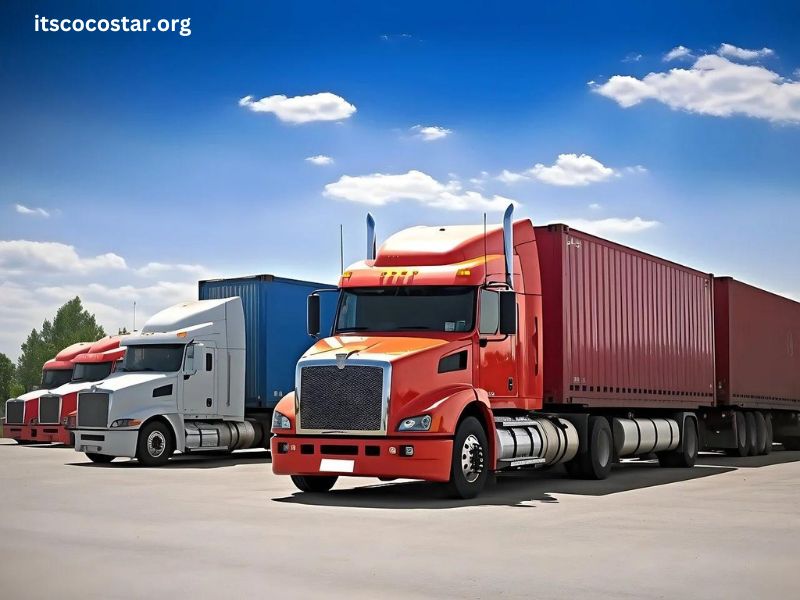Starting a truck stop business can be a lucrative venture, especially with the rise of e-commerce and the increasing need for freight transport. A well-placed truck stop not only serves the needs of truck drivers but can also attract local customers and travelers. Here’s a comprehensive guide to help you navigate the process of starting your own truck stop business.
1. Understanding the Truck Stop Business
What is a Truck Stop?
A truck stop is a facility that caters to the needs of truck drivers and their vehicles. Typically located along highways, truck stops provide services such as fuel, food, rest areas, and maintenance. They may also include convenience stores, restaurants, showers, and parking areas.
Market Demand
The demand for truck stops is driven by several factors:
- Increased Freight Transport: The rise of online shopping has led to more trucks on the road.
- Driver Shortages: With a shortage of truck drivers, there’s a growing need for places where they can rest and refuel.
- Highway Infrastructure: The U.S. has a vast network of highways, making truck stops essential for long-haul trucking.
2. Conducting Market Research
Before diving into the business, conduct thorough market research:
Analyze Your Location
- Traffic Patterns: Choose a location with high traffic, especially near major highways or intersections.
- Competitors: Identify existing truck stops and analyze their offerings. Understand what they do well and where they fall short.
Understand Your Audience
- Driver Needs: Survey truck drivers to understand their needs, preferences, and pain points.
- Local Community: Consider how to attract local customers as well. Offering services that appeal to both groups can increase your revenue.
3. Developing a Business Plan
A solid business plan will serve as your roadmap:
Executive Summary
Outline your business concept, mission statement, and the specific services you plan to offer.
Market Analysis
Include findings from your market research, detailing the target market and competition.
Marketing Strategy
Describe how you plan to attract customers, including pricing strategies, promotions, and partnerships.
Financial Projections
Estimate startup costs, operating expenses, and projected revenue. Include funding sources and break-even analysis.
Operations Plan
Detail the day-to-day operations, including staffing needs, supplier arrangements, and maintenance plans.
4. Securing Funding
Starting a truck stop requires significant investment. Consider the following funding options:
Personal Savings
Utilizing your savings can minimize debt but ensure you have enough for personal expenses.
Bank Loans
Prepare to present your business plan to secure loans from banks or financial institutions.
Investors
Seek investors interested in the trucking industry or partnerships that can bring additional resources.
Grants and Government Assistance
Research government grants or programs aimed at supporting small businesses or rural development.
5. Choosing the Right Location
The success of your truck stop heavily depends on its location. Consider these factors:
Accessibility
- Ensure easy access from highways for large trucks.
- Provide ample parking space for overnight stays.
Visibility
- Your truck stop should be visible from the road to attract passing drivers.
Amenities
Proximity to other services (like restaurants and repair shops) can increase traffic.
6. Navigating Legal Requirements
Business Structure
Choose a business structure (LLC, corporation, etc.) that best suits your needs and offers liability protection.
Licensing and Permits
Research and obtain necessary licenses and permits, which may include:
- Business license
- Health permits (for food services)
- Environmental permits (for fuel storage)
Zoning Regulations
Ensure the location complies with zoning laws for commercial and fuel services.
7. Designing Your Truck Stop
Layout Planning
Create a layout that accommodates:
- Fuel pumps
- Convenience store
- Restaurant or café
- Rest areas
- Showers and bathrooms
- Truck repair services
Aesthetic Appeal
A welcoming and clean environment can significantly enhance customer experience. Consider branding elements like signage and landscaping.
Technology Integration
Utilize technology for better service:
- Point of sale (POS) systems for efficiency
- Mobile apps for reservations or promotions
- Surveillance systems for safety
8. Staffing Your Truck Stop
Hiring Employees
Consider the types of staff you need:
- Cashiers
- Restaurant staff
- Maintenance personnel
- Customer service representatives
Training
Invest in employee training to ensure high-quality service, particularly in customer relations and safety practices.
9. Offering Essential Services
To attract and retain customers, consider offering a variety of services:
Fuel Services
- Competitive pricing is crucial.
- Offer different types of fuel, including diesel and compressed natural gas (CNG).
Food and Beverages
- A diner or fast-food restaurant can cater to drivers looking for meals.
- Offer quick snacks and beverages in the convenience store.
Rest Facilities
- Clean showers and restrooms are essential for long-haul drivers.
- Comfortable rest areas can make your stop more appealing.
Maintenance Services
- Partner with local mechanics to provide repair services.
- Offer basic services like tire checks, oil changes, and inspections.
10. Marketing Your Truck Stop
Online Presence
- Build a user-friendly website that includes location, services, and contact information.
- Use social media to engage with customers and promote offers.
Local Partnerships
- Collaborate with local businesses for cross-promotions.
- Participate in local events to raise awareness.
Loyalty Programs
Consider implementing loyalty programs for repeat customers, offering discounts or rewards for frequent visits.
11. Adapting and Growing
Customer Feedback
Regularly seek customer feedback to understand their needs and areas for improvement.
Expand Services
As your business grows, consider expanding your offerings:
- Truck washing services
- More dining options
- Additional retail items
Stay Updated on Industry Trends
Keep abreast of changes in the trucking industry, including regulations and technology, to adapt your business accordingly.
Conclusion
Starting a truck stop business requires careful planning, research, and execution. By understanding the needs of your target market, securing adequate funding, and providing essential services, you can create a successful and profitable venture. With the right strategies in place, your truck stop can become a valuable resource for truck drivers and local communities alike.






